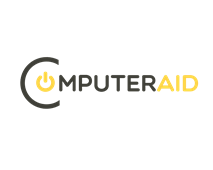
Introduction
Exception management is a key element of the PRINCE2 project methodology. It involves identifying, assessing, and addressing deviations from agreed-upon project parameters. In PRINCE2, this process is essential for maintaining project control and achieving successful outcomes.
The importance of exception management in PRINCE2 stems from its ability to:
- Optimise senior management time usage
- Encourage proactive problem-solving
- Improve project governance.
This article will cover:
- The ‘manage by exception’ principle
- Implementation approaches
- Seven performance aspects
- PRINCE2’s exception management technique
- Forecasting methods
- Effective practices.
Understanding exception management helps project managers navigate challenges and keep projects on course. This knowledge is valuable for those aiming to succeed in PRINCE2-based project environments and consistently deliver positive results.
The ‘manage by exception’ principle
Understanding Management by exception
‘Manage by exception’ is a core principle in PRINCE2 that focuses on efficient project management. It establishes predefined tolerances for project objectives, allowing for delegated authority within these limits. This approach enables project managers to handle day-to-day operations independently, escalating issues only when tolerances are exceeded.
Advantages of this principle include:
- Efficient use of senior management time
- Clear accountability at each project level
- Timely decision-making and problem-solving.
Tolerances in PRINCE2
Tolerances are permissible deviations from a plan’s targets without requiring escalation to higher management. They are crucial for implementing “Manage by Exception” effectively.
PRINCE2 defines seven aspects of performance requiring tolerances:
- Time
- Cost
- Quality
- Scope
- Risk
- Benefits
- Sustainability.
These tolerances are set at project, stage, and team levels. They provide a framework for monitoring progress and identifying potential issues early. By establishing clear boundaries, tolerances help maintain project control while allowing flexibility in execution. This balance ensures that management attention is focused where it’s most needed, enhancing overall project efficiency.
Implementing exception management
Establishing tolerances
Effective implementation of exception management begins with setting clear tolerance levels. These are established at three distinct levels:
- Project level: set by corporate or programme management
- Stage level: defined by the project board
- Team level: determined by the project manager.
Examples of tolerance setting for different aspects include:
- Time: ±2 weeks for project completion
- Cost: ±5% of the agreed budget
- Quality: 98-100% compliance with specifications
- Scope: delivery of all mandatory features, with flexibility on optional ones.
Delegation of authority
Tolerances facilitate efficient delegation by clearly defining the boundaries within which each management level can operate. This approach allows:
- Project managers to make decisions within stage tolerances
- Team managers to handle work package deviations within set limits.
The project board retains overall control, intervening only when tolerances are exceeded. This structure promotes autonomy while maintaining oversight.
Exception reporting process
Exception reporting is triggered when a tolerance breach is forecasted or occurs. The process typically follows these steps:
- Identification of potential or actual tolerance breach
- Creation of an Exception Report by the project manager
- Submission to the project board for review
- Decision-making on corrective actions or project redirection.
Timely communication is crucial in exception reporting. It enables swift responses to issues, minimising their impact on the project. Regular check-ins and progress evaluations help identify potential exceptions early, allowing for proactive management.
By implementing these practices, project teams can effectively manage exceptions, ensuring projects stay on track and achieve their objectives within defined parameters.
The seven aspects of performance in exception management
PRINCE2 identifies seven key aspects of performance that require tolerance setting for effective exception management. Understanding these aspects is crucial for maintaining project control and ensuring successful outcomes.
1. Benefits
This aspect focuses on the measurable improvements resulting from the project. Tolerances for benefits might allow for a certain degree of under-delivery or over-delivery.
Example: A sales improvement project may have a tolerance of ±2% on increased income generation.
2. Costs
Cost tolerances relate to the permissible overspend or underspend against the agreed budget.
Example: A project might have a tolerance of ±5% of the total budget.
3. Time
Time tolerances define the acceptable deviation from planned completion dates.
Example: A stage might have a tolerance of ±2 weeks from its scheduled end date.
4. Quality
Quality tolerances specify the acceptable variation from agreed acceptance criteria.
Example: A software project might allow for 98-100% compliance with specified functionality.
5. Scope
Scope tolerances outline the permissible variation in the project’s products or deliverables.
Example: A project might require delivery of all mandatory features but allow flexibility on 20% of optional features.
6. Sustainability
This aspect relates to how much the project’s activities or outcomes can deviate from sustainability targets.
Example: A construction project might have a tolerance of ±5% on its carbon emission targets.
7. Risk
Risk tolerances set limits on the project’s aggregated risks and individual risk impacts.
Example: The total cost of threats must remain below 10% of the budget, with no single threat exceeding 5%.
By setting clear tolerances for these seven aspects, project managers can:
- Establish clear boundaries for decision-making
- Identify potential issues early
- Ensure appropriate escalation of exceptions
- Maintain a balance between flexibility and control.
Effective management of these performance aspects contributes significantly to project success, allowing for informed decision-making and timely corrective actions when necessary.
Exception management technique in PRINCE2
Six-step exception management process
PRINCE2 employs a structured six-step technique for managing exceptions effectively:
- Forecast: The team manager predicts a tolerance breach in a work package.
- Raise issue: An issue is logged in the issue register for the project manager’s attention.
- Escalate: If the issue affects stage tolerances, the project manager creates an exception report.
- Review options: The project board evaluates the exception report and potential solutions.
- Create exception plan: If required, the project manager develops a detailed plan to address the exception.
- Implement: Upon approval, the exception plan becomes the new stage plan.
Roles and responsibilities:
- Team manager: Forecasts exceptions and raises issues
- Project manager: Assesses issues, creates exception reports and plans
- Project board: Reviews exception reports, makes decisions on corrective actions.
Exception plans
Exception plans serve as detailed roadmaps for addressing significant deviations from agreed tolerances. Their primary purposes are to:
- Outline specific actions to bring the project back within tolerances
- Provide a revised baseline for project performance.
Creation process:
- Analyse the exception’s impact on the project
- Develop alternative courses of action
- Select the most appropriate solution
- Detail the implementation approach.
Once approved, an exception plan replaces the current stage plan, becoming the new baseline for project execution and performance measurement. This ensures that the project adapts to changes while maintaining clear objectives and control mechanisms.
By following this structured approach, PRINCE2 projects can effectively manage exceptions, minimising their impact and maintaining project momentum.
Forecasting in exception management
Importance of forecasting
Forecasting plays a crucial role in exception management by enabling proactive identification of potential issues. It allows project teams to:
- Anticipate deviations from tolerances
- Implement preventive measures early.
- Minimise the impact of exceptions on project outcomes
Effective forecasting relies on various data types, including:
- Historical project performance
- Current project metrics
- External factors affecting the project
- Risk assessments and probability analyses.
Tools and techniques for forecasting
Forecasting in PRINCE2 today might mean leveraging advanced technologies and data-driven approaches:
- Digital management systems:
- Integrated project management software
- Real-time data collection and analysis tools.
- Predictive analytics:
- Machine learning algorithms for trend identification
- Scenario modelling for risk assessment.
- Data trusts:
- Shared data repositories for benchmarking
- Industry-specific performance metrics.
These tools enable project managers to conduct ‘what-if’ analyses, enhancing decision-making processes. By combining historical data, current project information, and predictive models, teams can generate accurate forecasts. This approach supports timely exception identification and facilitates effective management of project tolerances.
Effective practices for exception management
Implementing robust exception management requires adherence to several key practices:
Clear communication channels
Establishing transparent communication pathways is essential for effective exception management:
- Define clear escalation procedures
- Ensure all team members understand reporting lines
- Utilise project management software for real-time updates
- Conduct regular team briefings on tolerance status.
Regular monitoring and reporting
Consistent oversight of project performance is crucial:
- Implement automated tracking systems for key metrics
- Conduct weekly reviews of tolerance levels
- Generate standardised reports for easy comparison
- Use visual dashboards to highlight potential exceptions.
Continuous learning and improvement
Enhancing exception management processes over time:
- Maintain a detailed lessons log throughout the project
- Conduct post-exception reviews to identify improvement areas
- Share insights across the organisation to prevent recurring issues
- Regularly update exception management procedures based on learnings.
By integrating these practices, project teams can significantly improve their ability to identify, manage, and learn from exceptions. This approach fosters a culture of proactive management and continuous improvement, ultimately leading to more successful project outcomes and enhanced organisational capabilities in exception handling.
Conclusion
Exception management is a cornerstone of effective project governance in PRINCE2. By implementing the ‘manage by exception’ principle, setting clear tolerances, and following structured processes, project teams can:
- Identify and address issues promptly
- Optimise resource allocation
- Maintain project control while allowing flexibility.
The seven performance aspects provide a comprehensive framework for monitoring project health. Coupled with robust forecasting techniques and effective practices, exception management significantly enhances project outcomes.
Ultimately, proficiency in exception management enables project managers to navigate challenges efficiently. It ensures that projects remain aligned with objectives, adapt to changes, and deliver value consistently. This skill is indispensable for achieving sustained project success in complex environments.
FAQs
What is the main goal of exception management in PRINCE2?
The primary aim is to maintain project control by promptly identifying and addressing deviations from agreed tolerances.
How does ‘manage by exception’ compare to other project management approaches?
It emphasises delegated authority within set tolerances, reducing micromanagement and enhancing efficiency compared to traditional hierarchical approaches.
What are the seven aspects of performance in PRINCE2 exception management?
The seven aspects are: time, cost, quality, scope, risk, benefits, and sustainability.
How often should teams review tolerances during a project?
Teams should review tolerances regularly, typically at stage boundaries and during periodic progress checks.
What is the project board’s role in exception management?
The project board sets project-level tolerances, reviews exception reports, and makes decisions on corrective actions when tolerances are exceeded.
How does exception management help use senior management time efficiently?
By delegating authority within tolerances, senior management only needs to intervene when significant issues arise, optimising their time allocation.
What is an exception plan, and when do teams create one?
An exception plan is a detailed strategy for addressing tolerance breaches. Teams create one when a stage is forecast to exceed its tolerances.
How does forecasting contribute to effective exception management?
Forecasting enables proactive identification of potential tolerance breaches, allowing teams to implement preventive measures early and minimise impacts on project outcomes.
Infographic









